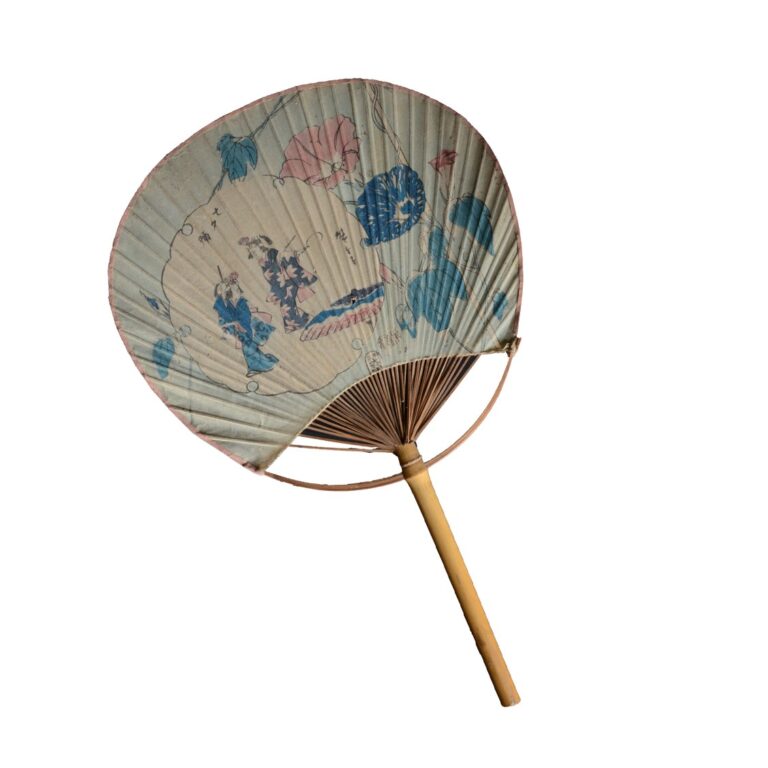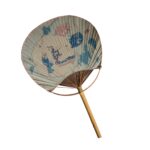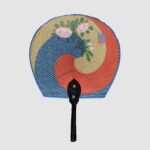Oval fan uchiwa
An oval fan (uchiwa 団扇) on whose obverse are pink and purple bindweed (asagao 朝顔) in full bloom, and two dancers, with the words Tanabata dance (Tanabata odori 七夕踊). This is danced at the Star Festival (Hoshi matsuri 星祭り). The author of the painting is Utagawa Hiroshige II 歌川 広重 (1826–1869). Hiroshige’s brush signature, the censor’s seal kiwame 極め, the year 1859, and the seal of the publisher Ise Sōemon 伊勢屋惣右衛門 are also visible. On the back of the fan is a motif of a woman gathering herbs for the new year. This refers to the Seven Herbs Festival, which originated in China and was introduced to Japan during the Heian period (794–1185). During the Edo period (1603–1867), January 7 was declared a holiday as one of five seasonal festivals (gosekku ご節句). On this day, the Japanese eat rice porridge with seven wild herbs (nanakusa-gayu 七草粥), the first greens ... more
An oval fan (uchiwa 団扇) on whose obverse are pink and purple bindweed (asagao 朝顔) in full bloom, and two dancers, with the words Tanabata dance (Tanabata odori 七夕踊). This is danced at the Star Festival (Hoshi matsuri 星祭り). The author of the painting is Utagawa Hiroshige II 歌川 広重 (1826–1869). Hiroshige’s brush signature, the censor’s seal kiwame 極め, the year 1859, and the seal of the publisher Ise Sōemon 伊勢屋惣右衛門 are also visible. On the back of the fan is a motif of a woman gathering herbs for the new year. This refers to the Seven Herbs Festival, which originated in China and was introduced to Japan during the Heian period (794–1185). During the Edo period (1603–1867), January 7 was declared a holiday as one of five seasonal festivals (gosekku ご節句). On this day, the Japanese eat rice porridge with seven wild herbs (nanakusa-gayu 七草粥), the first greens of the new year. It was customary to gather the herbs in a basket the day before and then cut them into small pieces on a wooden board with seven traditional kitchen utensils, in an auspicious direction. While doing so, they recited, “Before the Tang birds fly to Japan, I will grind seven herbs”. They believed that this incantation would protect the future harvest and that the freshness of the herbs would bring them vitality and health. (NVG)




































Do you have a comment or additional information about the subject?